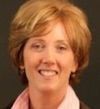
October 27, 2015
 Colleen Pietrobono‘s career so far has been a good illustration of this trajectory and why it is the new normal. As a Principal in EY’s Performance Improvement line, she helps organizations with technology and process enhancements, leveraging Analytics, Big Data and Performance Management solutions.
Colleen Pietrobono‘s career so far has been a good illustration of this trajectory and why it is the new normal. As a Principal in EY’s Performance Improvement line, she helps organizations with technology and process enhancements, leveraging Analytics, Big Data and Performance Management solutions.“I received my degree in Accounting and computer systems management, did internships where I worked with forecasting software running on the mainframe, and transitioned to consulting where I wrote COBOL, ultimately working on a large financial software package that became Hyperion.”
“I had a great mentor at Hyperion who whenever I felt stressed thinking I should have all the solutions myself, and if I only worked 10 more hours a day I’d have it, said you are one person. You working more hours on this problem won’t make a dent in it. Step back and think about what the problem truly is and seek people with different points of view.
I had 2 small daughters at the time. My mentor said other people have other things in their life, too �" kids, sports, - you are not the only person with other things in their life. As a result, I learned how to think like a leader and get things done through and with other people. Working harder is not always the best solution.”
“Gather a team with different points of view. Go to the client and listen to issues. Develop a real problem statement and get everyone on the same page. Don’t go in with preconceived notions that you know what the problem is. Do investigative work. Then ask ‘What did we hear?’”
She’s not talking about problems of installing software, or integrating heterogeneous solutions �" she’s talking about problems and issues of project purpose �" the goal of the work �" the “universal problem �" use of technology, people, and process to improve financial results.”
“We realized as a leadership team that we needed to move / change our offering from commoditized staff augmentation to work with more strategic value. The big challenge was to continue to grow the company while simultaneously doing a sustained change management effort with people internally.
We conducted one-on-one and group sessions within our company to understand why client, company and individuals need to change, while at the same time bringing in new people to create the new strategic offering. It was one of the great changes the company went through. EY ended up buying the company and they would have looked at it
differently if we hadn’t changed.
The surprise learning from Colleen’s career trajectory? Thinking holistically about business processes requires grounding, confidence and actively getting more brains on the problems than her own. “To solve problems collaboratively, listen to multiple perspectives. Keep panic and negativity at bay. View problems as solvable together.”
Opinions expressed by the author are not necessarily those of WITI.
Are you interested in boosting your career, personal development, networking, and giving back? If so, WITI is the place for you! Become a WITI Member and receive exclusive access to attend our WITI members-only events, webinars, online coaching circles, find mentorship opportunities (become a mentor; find a mentor), and more!
There are no WITI online coaching circles scheduled at this time. Please check back soon for updates.
Founded in 1989, WITI (Women in Technology International) is committed to empowering innovators, inspiring future generations and building inclusive cultures, worldwide. WITI is redefining the way women and men collaborate to drive innovation and business growth and is helping corporate partners create and foster gender inclusive cultures. A leading authority of women in technology and business, WITI has been advocating and recognizing women's contributions in the industry for more than 30 years.
The organization delivers leading edge programs and platforms for individuals and companies -- designed to empower professionals, boost competitiveness and cultivate partnerships, globally. WITI’s ecosystem includes more than a million professionals, 60 networks and 300 partners, worldwide.
Empower Innovators.
Inspire Future Generations.
Build Inclusive Cultures.
Building Your Network.
Building Your Brand.
Advancing Your Career.
Comments